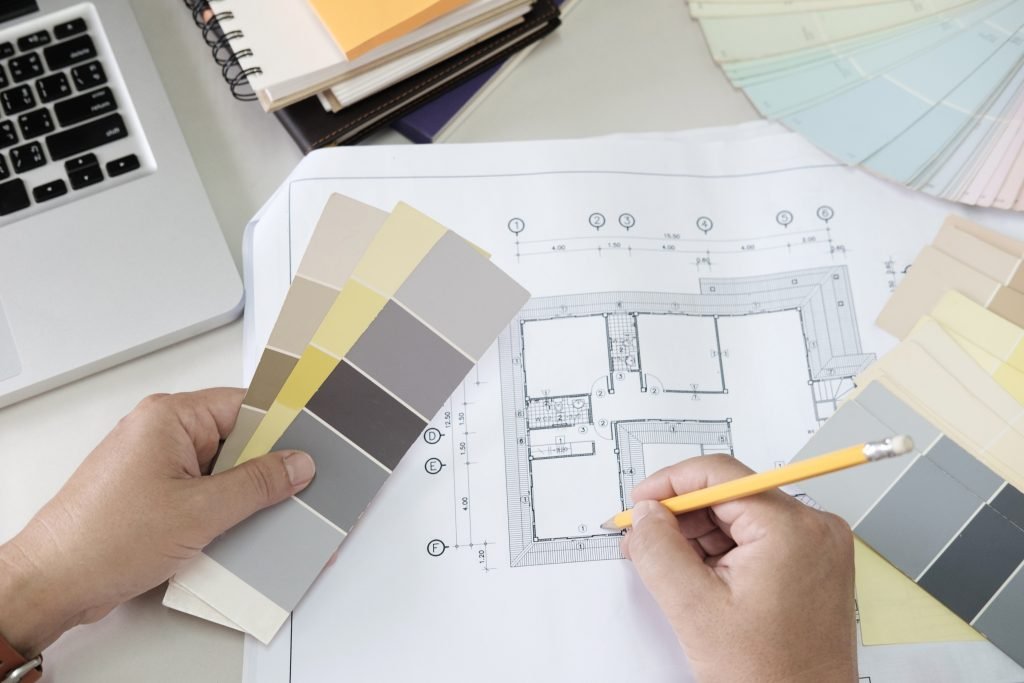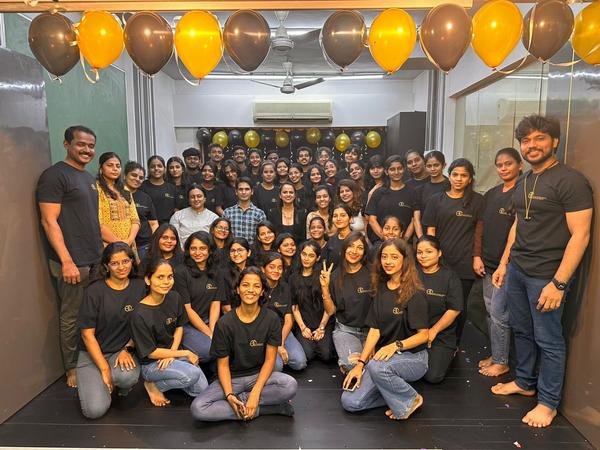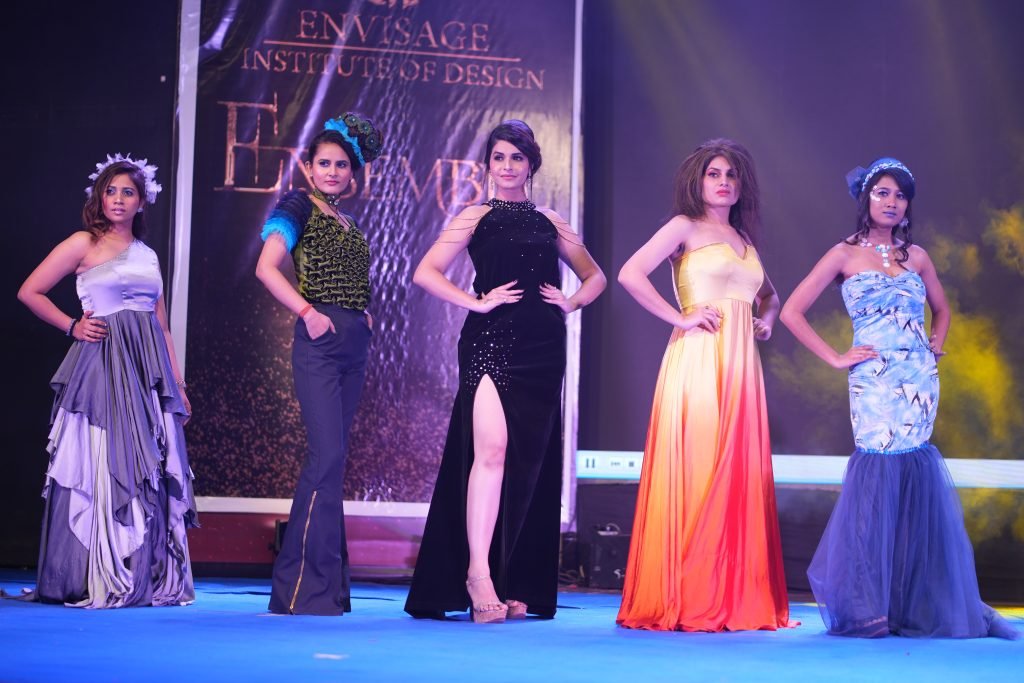
Hi! This is Envisage Institute Of Design, a premier institute which hosts and conducts certified courses in Interior and Fashion Design which are applicable international, apart from these, we also have a bunch of other courses that we conduct as well. Follow us along in this journey, as we share some of our stories, and we know that you will have fun reading them as much as we have fun in writing and sharing them!
FASHION DESIGN: HOW TO STAND OUT WITH YOUR OWN STYLE
In the vibrant and ever-evolving world of fashion design, standing out is not merely a desire but a necessity. With trends constantly shifting and tastes varying widely, establishing your unique style becomes paramount. Whether you’re a seasoned designer or just starting, carving your niche in the industry requires a blend of creativity, authenticity, and strategic thinking. In this guide, we delve into the essence of personal style in fashion design and explore actionable tips to help you distinguish yourself from the crowd.
Understanding the Power of Personal Style
At its core, personal style is a reflection of your individuality, values, and creative expression. It transcends fleeting trends and serves as a visual language through which you communicate with the world. Developing a distinct style not only sets you apart but also fosters a deeper connection with your audience. It’s about infusing your designs with a unique perspective that resonates with your target demographic.
Embrace Your Unique Identity
To stand out in fashion design, authenticity is key. Embrace your unique identity, quirks, and cultural influences as they provide a rich foundation for your creative journey. Instead of conforming to industry norms, celebrate what makes you different and channel it into your designs. Whether it’s incorporating elements from your heritage or drawing inspiration from unconventional sources, staying true to yourself sets the stage for genuine innovation.

Research and Inspiration
While staying true to your identity is crucial, it’s equally important to stay informed about industry trends and consumer preferences. Researching emerging styles, materials, and technologies can provide valuable insights into market demands while also sparking new ideas. However, remember that inspiration can come from anywhere – be it art, nature, architecture, or even everyday experiences. Cultivate a curious mindset and keep an open eye for inspiration in the most unexpected places.
Experimentation and Risk-Taking
Standing out often requires stepping out of your comfort zone and taking creative risks. Experiment with unconventional materials, silhouettes, or techniques to push the boundaries of traditional fashion design. Don’t be afraid to challenge norms and defy expectations – innovation thrives on bold experimentation. Even if some attempts fail, each experience contributes to your growth as a designer and brings you closer to discovering your signature style.
Focus on Craftsmanship and Quality
In a world inundated with fast fashion and mass-produced garments, craftsmanship and quality are increasingly valued by consumers. Pay meticulous attention to detail, from fabric selection to construction techniques, to ensure that your creations exude excellence. Invest time in honing your craft and mastering the art of garment construction – impeccable quality sets your designs apart and reinforces your credibility as a fashion designer.

Storytelling Through Design
Every fashion piece has a story to tell, and mastering the art of storytelling through design can elevate your creations to new heights. Infuse your garments with narrative elements, whether it’s inspired by a personal experience, cultural heritage, or social commentary. Create collections with cohesive themes and visual narratives that captivate and resonate with your audience on a deeper level. Remember, compelling storytelling not only enhances the appeal of your designs but also strengthens your brand identity.
Building a Strong Brand Presence
In today’s digital age, establishing a strong brand presence is essential for success in fashion design. Leverage social media platforms, websites, and online marketplaces to showcase your portfolio and engage with your audience. Develop a distinct visual identity and brand voice that reflects your unique style and values. Consistency across all touchpoints – from your logo and packaging to your online content – fosters brand recognition and loyalty.
Collaboration and Networking
Collaboration can be a powerful catalyst for innovation and exposure in the fashion industry. Partnering with other designers, artists, photographers, or influencers can offer fresh perspectives and expand your reach to new audiences. Networking with industry professionals, attending fashion events, and participating in collaborative projects can also open doors to new opportunities and collaborations. Cultivate meaningful connections and foster a supportive community within the fashion ecosystem.
Conclusion
In the competitive landscape of fashion design, standing out with your own style requires a combination of creativity, authenticity, and strategic thinking. Embrace your unique identity, draw inspiration from diverse sources, and don’t shy away from experimentation and risk-taking. Focus on craftsmanship, storytelling, and building a strong brand presence to resonate with your audience and leave a lasting impression. Remember, true innovation stems from staying true to yourself and daring to be different in a world of conformity.
EXPLORING THE HOTTEST INTERIOR DESIGN TRENDS OF 2024
Introduction:
As we step into a new year, the world of interior design is abuzz with fresh ideas, creative inspiration, and innovative concepts that are set to redefine our living spaces. In this blog, we will embark on a journey to discover the most captivating interior design trends that are taking the world by storm in 2024 . From sustainable materials to cozy minimalism, let’s explore the key elements that are bringing homes to life and transforming them into beautiful havens of style and comfort.
1.Sustainable Materials:
Sustainability has become an essential aspect of interior design, as more people are committed to adopting eco-friendly practices in their homes. This year, sustainable materials such as reclaimed wood, bamboo, and recycled glass are ruling the design scene. These materials not only add unique textures and organic vibes to a space but also contribute to environmental conservation.
2.Earthy Tones and Biophilic Design:
Nature-inspired color palettes are making a strong comeback in 2024. From warm terracotta to calming shades of green, homeowners are turning towards earthy tones to create a soothing ambiance. Coupled with biophilic design principles, which incorporate natural elements like plants and natural light, this trend encourages a deeper connection to nature within the confines of our own homes.

3.Cozy Minimalism:
The concept of minimalism has gained immense popularity in recent years. However, this year, designers are taking it a step further by introducing elements of coziness into minimalistic spaces. With the motto “Less is more”, this trend emphasizes on creating curated, clutter-free areas with soft textures, warm lighting, and inviting seating arrangements that exude comfort and simplicity.
4.Grandmillennial Style:
In a nod to nostalgia, the grandmillennial style is making a stylish comeback in 2024. Combining the charm of traditional aesthetics with the freshness of modern elements, this trend celebrates the revival of vintage treasures. Think chintz fabrics, ornate frames, and heirlooms, blended seamlessly with contemporary elements to create visually captivating spaces that tell a story.
5.Multifunctional Spaces:
The pandemic has significantly influenced our lifestyles, leading to an increased need for versatile and multifunctional spaces within our homes. From home offices that double as guest bedrooms to dining areas that transform into homeschooling zones, homeowners are now looking for smart design solutions that optimize space utilization while maintaining aesthetics and functionality.

6.Statement Ceilings:
Ceilings are stepping into the spotlight this year as designers and homeowners recognize their potential to transform a space. Whether it’s through wallpaper, intricate moldings, or bold paint colors, statement ceilings are becoming a popular design choice. This trend adds visual interest and a touch of drama, making ceilings an integral part of the overall design scheme.
7.Natural Lighting:
With an increased focus on health and well-being, natural lighting is gaining prominence in interior design. Maximizing natural light through larger windows, skylights, or strategically placed mirrors not only enhances the aesthetics of a space but also promotes a healthier, happier environment by providing a connection to the outdoors and boosting energy levels.
8.Personalization and Self-Expression:
In 2024, homeowners are seeking ways to infuse their personalities and self-expression into their living spaces. Customized pieces of furniture, handmade ceramics, and curated art collections are some ways people are adding a unique touch to their homes. This trend emphasizes the value of creating a space that truly reflects one’s identity and nurtures a sense of belonging.
Conclusion:
The world of interior design is constantly evolving, and 2021 has brought forth an array of exciting trends that cater to various styles and preferences. From embracing sustainability to creating cozy minimalistic havens, homeowners now have a multitude of options to transform their spaces into beautiful reflections of their personalities. As we embark on the journey of this year, let’s embrace the beauty and functionality of these trends while staying true to our own design sensibility. After all, a well-designed living space has the power to uplift our spirits, inspire creativity, and provide solace in times of uncertainty.
CHOOSING FASHION DESIGN COURSES AS A SPECIALITY FOR YOUR CAREER.
Why do we Choose a Fashion Design Course as a Specialty for Your Career?
Introduction
Fashion design is not just about creating beautiful garments; it’s about expressing creativity, understanding trends, and mastering technical skills. For those passionate about fashion, pursuing a fashion design course can be a rewarding journey that opens doors to a dynamic and ever-evolving industry. In this blog, we’ll explore why choosing a fashion design course as a specialty for your career can be a transformative decision.
First and foremost, a fashion design course provides a structured pathway to honing your skills and developing a deep understanding of the craft. From learning the fundamentals of sketching and pattern making to mastering sewing techniques and garment construction, these courses offer comprehensive training that equips aspiring designers with the tools they need to succeed. Whether you’re a complete beginner or have some experience in the field, a fashion design course can cater to individuals at various skill levels, providing tailored instruction to help you grow and improve.
Guidance and Mentorships
One of the most valuable aspects of enrolling in a fashion design course is the opportunity to receive guidance and mentorship from industry professionals. Many reputable institutions collaborate with established designers or industry experts who bring real-world experience and insights into the classroom. This exposure not only enhances your learning experience but also helps you build valuable connections within the industry. Mentors can provide invaluable advice, critique your work, and offer insights into the latest trends and developments, giving you a competitive edge as you pursue your career in fashion.

Additionally, a fashion design course offers a platform for experimentation and exploration. It encourages students to push boundaries, think creatively, and develop their unique style. Through hands-on projects, assignments, and design challenges, students have the freedom to explore different techniques, materials, and concepts, allowing them to discover their strengths and interests within the vast landscape of fashion design. This process of self-discovery is essential for developing a distinct design identity and carving out a niche in the industry.
Moreover, a fashion design course provides opportunities for collaboration and networking. Fashion is a collaborative industry, and building strong relationships with fellow designers, photographers, stylists, and other professionals is key to success. By studying alongside like-minded individuals who share your passion for design, you not only expand your professional network but also gain insights and inspiration from your peers. Collaborative projects and group critiques foster a sense of community and camaraderie, creating a supportive environment where students can learn from each other and grow together.
Industrial Visits and Collaboration
In addition to technical skills and creative expression, a fashion design course also emphasizes the importance of market awareness and business acumen. In today’s competitive landscape, understanding the business side of fashion is essential for success. Courses often cover topics such as trend forecasting, brand development, marketing strategies, and retail merchandising, equipping students with the knowledge and skills they need to navigate the industry with confidence. Whether you aspire to launch your own label, work for a renowned fashion house, or pursue a career in merchandising or fashion marketing, a solid understanding of the business side of fashion is invaluable.

Furthermore, enrolling in a fashion design course provides access to state-of-the-art facilities and resources that may not be readily available elsewhere. From well-equipped studios and sewing labs to libraries stocked with books and magazines on fashion history and theory, institutions invest in creating an environment that fosters creativity and innovation. Access to industry-standard equipment and software enables students to bring their design visions to life with precision and professionalism, preparing them for the demands of the real world.
Lastly, pursuing a fashion design course allows you to immerse yourself in a vibrant and dynamic community of creatives. Whether you choose to study locally or abroad, you’ll be surrounded by individuals who share your passion and enthusiasm for fashion. From attending fashion shows and exhibitions to participating in design competitions and industry events, there are countless opportunities to engage with the wider fashion community and gain exposure for your work. Being part of such a community not only provides inspiration and motivation but also opens doors to potential collaborations, internships, and job opportunities.
Conclusion
In conclusion, choosing a fashion design course as a specialty for your career can be a transformative decision that sets you on the path to a fulfilling and rewarding profession. From honing your technical skills and receiving mentorship from industry professionals to exploring your creative potential and building valuable connections, the benefits of enrolling in a fashion design course are manifold. Whether you dream of seeing your designs on the runway or making your mark in the world of fashion merchandising, investing in your education is the first step towards turning your passion for fashion into a successful career.
A PRACTICAL GUIDE TO LAUNCHING A FLOURISHING INTERIOR DESIGN CAREER
INTRODUCTION : Interior Design Career for
Learning.
Interior design is a vibrant and ever-evolving field that combines
creativity, problem-solving, and a keen eye for aesthetics. If you have a
passion for transforming spaces and creating visually stunning environments,
pursuing a career in interior design can be an excellent choice. In this
comprehensive guide, we will debunk common myths, navigate the necessary steps
to succeed in this industry, and explore the limitless possibilities of an
interior design career.
I. Preparing for a Career in Interior Design
Before diving into the exciting world of interior design, it is crucial
to assess your passion, skills, and aspirations. By evaluating your creative
abilities and gaining relevant education and certifications, you will lay a
strong foundation for your future success.
A. Assessing your passion and skills for interior design
Identifying personal design preferences and inspirations allows you to
develop a unique design style. Pay attention to the elements, colors, textures,
and atmospheres that resonate with you. This self-awareness will guide your
creative decisions and help you cater to clients’ needs effectively.
Evaluating your creative and problem-solving abilities is equally
important. Interior design is not only about making spaces visually pleasing,
but also about enhancing functionality and optimizing the use of available
resources. Reflect on your ability to think outside the box, find innovative
solutions, and adapt to various project requirements.
To complement your passion and skills, garnering relevant educational
qualifications and certifications boosts your credibility as an interior
designer. Consider pursuing a degree in interior design career or enrolling in
specialized courses that cover the fundamental principles of design, color
theory, and spatial planning.
B. Building a strong foundational knowledge
To excel in the field of interior design, acquiring a strong
foundational knowledge is essential. Studying the principles of design and
color theory equips you with a framework for creating harmonious and visually
appealing spaces. Understanding how different colors, textures, and patterns
interact not only enhances your design skills but also enables you to
effectively communicate your ideas to clients.
Exploring architectural styles and historical influences allows you to
contextualize your designs and draw inspiration from the rich tapestry of
design history. Familiarizing yourself with different architectural movements
and innovative designers will broaden your design vocabulary and help you
create spaces that reflect your clients’ preferences.
Moreover, in today’s digital age, it is crucial to familiarize yourself
with popular interior design software and tools. Proficiency in software like
AutoCAD, SketchUp, and Adobe Creative Suite can significantly streamline your
design process and enhance your presentation capabilities.
C. Developing a diverse portfolio
A diverse portfolio plays a vital role in attracting potential clients,
employers, and collaborators. Showcasing a range of design projects across
different aesthetics demonstrates your versatility and adaptability as an
interior designer. Include photographs, mood boards, and concept sketches that
effectively capture the essence of each project.
In addition to showcasing your finished projects, emphasize your
technical skills through CAD drawings and mock-ups. Providing evidence of your
ability to translate your ideas into tangible designs will instill confidence
in your potential clients and collaborators.
Moreover, highlight your ability to cater to various client needs and
budgets. Showcase projects that span different scales, from small residential
spaces to larger commercial projects. This demonstrates your flexibility in
working with diverse clients and allows you to connect with a broader audience.
II. Gaining Practical Experience
Gaining practical experience is a crucial step towards launching a
successful interior design career. Seek internships or apprenticeships, assist
established designers, and participate in design competitions and events to
refine your skills and expand your network.
A. Seeking internships or apprenticeships
Research reputable interior design firms and studios that offer
internship opportunities. This hands-on experience allows you to immerse yourself
in the real-world aspects of interior design and gain valuable insights from
experienced professionals. Apply proactively to secure internships and leverage
your networking skills to find apprenticeship opportunities with industry
veterans.
B. Assisting established designers
Collaborating with seasoned professionals is an invaluable way to learn
industry best practices. By assisting established designers, you can observe
their design process, understand how they navigate client interactions, and
gain practical knowledge in areas such as project management and budgeting.
Working on real projects provides a comprehensive and holistic understanding of
the interior design industry.
C. Participating in design competitions and events
Join local design associations or organizations that organize design
competitions and events. Competing in design challenges allows you to showcase
your skills and creativity while receiving valuable feedback from experts in
the field. Attending industry trade shows and conferences provides networking opportunities
and keeps you updated with the latest trends and innovations in the industry.
III. Establishing Your Interior Design Business
Once you have gained substantial experience and honed your skills, you
can consider establishing your own interior design business. Defining your
niche, building a strong brand identity, and cultivating client relationships
are essential steps in this endeavor.
A. Defining your niche and target market
Identify specialized areas of expertise within the broad field of interior
design. Consider whether you want to focus on residential, commercial,
sustainable design, or any other specific niche. Analyze market demand and
competition within your chosen niche to determine if there is a viable market
for your services. Creating a unique value proposition that sets you apart from
competitors is crucial in attracting potential clients.
B. Building a strong brand identity
Craft a memorable business name and design a distinct logo that
effectively represents your brand identity. Your brand should communicate your
design philosophy, values, and the unique qualities that make you stand out.
Develop a professional website and an online portfolio that showcases your work
and provides a seamless browsing experience for potential clients. Utilize
social media platforms to share your design journey, engage with your audience,
and promote your services effectively.
C. Cultivating client relationships and
managing projects
Establish clear communication channels with your clients from the onset.
Thorough initial consultations allow you to understand your clients’ needs,
preferences, and budgetary constraints. Implement efficient project management
strategies to ensure client satisfaction. This includes effective time
management, thorough documentation, and transparent communication throughout
the design process. Regularly update your clients on the progress of their
projects and address any concerns promptly to maintain a positive working
relationship.
IV. Nurturing Your Career Growth
To thrive in the interior design industry, continuous learning,
collaboration with professionals in related fields, and actively engaging with
the design community are key.
A. Continuing education and staying updated
Pursue advanced courses or certifications to enhance your skills and
stay ahead of the curve. Explore specialized areas within interior design, such
as sustainable design, lighting design, or ergonomics. Keep up with industry
trends, new materials, and technologies to provide innovative and cutting-edge
design solutions. Attend workshops and seminars to broaden your knowledge and
network with industry experts and peers.
B. Collaborating with other professionals in
related fields
Establish partnerships with architects, contractors, suppliers, and
other professionals in related fields. Collaborating on projects allows you to
expand your professional network and offer comprehensive design services. By
working closely with professionals from different disciplines, you can leverage
synergies and create cohesive designs that cater to your clients’ diverse
needs.
C. Seeking recognition and becoming a thought leader
Showcase your expertise by speaking at industry events, writing
articles, and participating in design panels or jury positions. Sharing your
knowledge and insights solidifies your credibility as a thought leader in the
interior design community. Actively engage with the design community through
social media, attending design events, and joining professional organizations
to expand your network and stay connected with industry trends.
V. Summary and FAQs
In summary, starting a successful interior design career requires
assessing your passion and skills, building a strong foundation of knowledge,
gaining practical experience, establishing your own business, and nurturing
your career growth. Here are some frequently asked questions to address common
concerns:
* How long does it take to become an interior designer?
The timeline to become an interior designer varies
depending on individual circumstances and educational choices. Pursuing a
degree in interior design typically takes around four years, while specialized
courses or certifications may require a shorter time frame.
* Is it necessary to have a degree to become an interior designer?
While a formal degree in interior design can provide
a comprehensive understanding of the field, it is not the sole path to success.
Gaining practical experience, building a strong portfolio, and continuously
expanding your knowledge and skills are equally valuable in establishing a
flourishing interior design career.
* How can I gain practical experience if I am just starting?
Seeking internships or apprenticeships with reputable
interior design firms, assisting established designers, and participating in
design competitions can provide valuable practical experience to kickstart your
career.
Remember, a career in interior design offers limitless possibilities for
creativity, personal growth, and professional success. By following these
practical steps and investing in continuous learning, you can embark on a
fulfilling journey in the captivating world of interior design.
*The content provided is for
informational purposes only; please consult with a professional before making
any career decisions.
ENVISAGE INSTITUTE OF DESIGN: BEST INTERIOR DESIGN INSTITUTE IN MUMBAI.
Introduction: Best Interior Design Institute in Mumbai.
In the bustling cityscape of Mumbai, where every corner tells a unique story of design and aesthetics, the quest for the finest interior design education leads many aspirants to the doors of Envisage Institute of Design. This institute, renowned for its commitment to excellence, has earned the coveted title of the “Best Interior Design Institute in Mumbai.” Let’s delve into the myriad facets that make Envisage stand out and explore why it is the preferred choice for those looking to embark on a rewarding journey in the world of interior design.
Establishing Excellence:
At the heart of Envisage Institute of Design’s claim to fame is its unwavering dedication to providing an exceptional education in interior design. With a legacy spanning years, the institute has cultivated a culture of excellence that permeates every aspect of its academic offerings. The faculty, comprised of seasoned professionals and experts in the field, ensures that students receive a comprehensive and industry-relevant education, setting them on a path to success in the competitive world of interior design.
Dynamic Curriculum:
Envisage Institute of Design stands at the forefront of design education, continually adapting its curriculum to align with the evolving trends and demands of the industry. The institute places a premium on ensuring that students are equipped not only with theoretical knowledge but also with the practical skills required for a successful career. The dynamic curriculum covers a spectrum of subjects, including spatial design, furniture design, color theory, and architectural detailing, providing a holistic foundation for aspiring designers.

Cutting-Edge Facilities:
To complement its forward-thinking curriculum, Envisage invests heavily in state-of-the-art facilities designed to replicate real-world design scenarios. Design studios equipped with the latest software, a materials library, and collaborative spaces create an environment that nurtures creativity and innovation. The institute strongly believes in a hands-on approach to learning, providing students with workshops and labs where they can experiment, prototype, and bring their creative ideas to life. This emphasis on practical learning ensures that Envisage graduates are well-prepared to meet the challenges of the ever-evolving field of interior design.
Industry Integration:
Envisage recognizes the importance of bridging the gap between academia and industry. To this end, the institute actively collaborates with leading design firms, architects, and industry professionals. Guest lectures, workshops, and industry visits are integral components of the curriculum, offering students valuable insights into the practical aspects of the profession. Internship opportunities and collaborative projects further expose students to real-world challenges, preparing them for the dynamic nature of the industry. Envisage’s emphasis on industry integration solidifies its reputation as a hub for cultivating professionals rather than just students.
Practical Skill Development:
While theoretical knowledge lays the groundwork, Envisage Institute of Design understands that practical skills are the key to success in the field of interior design. The curriculum incorporates hands-on projects and assignments, challenging students to apply their knowledge to solve real-world design problems. From conceptualization to execution, students are encouraged to think creatively and develop a keen eye for detail. This practical approach ensures that Envisage graduates not only possess academic qualifications but also the confidence and proficiency to excel in the practical challenges of the interior design profession.

Student-Centric Philosophy:
Envisage takes pride in its student-centric philosophy, fostering an environment where the growth and well-being of each student are paramount. The institute maintains an optimal student-teacher ratio, ensuring personalized attention and effective mentoring. The faculty at Envisage goes beyond traditional roles, serving as mentors who guide students through their academic journey and help shape their career paths. The institute provides a platform for students to showcase their work through exhibitions, competitions, and industry events, fostering a sense of pride and accomplishment among the budding designers.
Alumni Success Stories:
The true testament to the success of any educational institution lies in the accomplishments of its alumni. Envisage Institute of Design boasts a lineage of successful graduates who have made significant contributions to the field of interior design. Alumni from Envisage can be found working with prestigious design firms, contributing to high-profile projects, and even establishing their own successful design studios. The success stories of Envisage alumni stand as a living testament to the institute’s commitment to providing quality education and shaping the future leaders of the interior design industry.
Conclusion:
In the competitive landscape of Mumbai’s design education, Envisage Institute of Design emerges as a beacon of excellence, rightfully earning the title of the “Best Interior Design Institute in Mumbai.” Envisage stands as a holistic educational institution that goes beyond conventional norms. Choosing Envisage is not just a step towards a degree; it’s a commitment to a transformative educational journey that prepares individuals to make a mark in the dynamic and ever-evolving field of interior design. Envisage Institute of Design is more than an institute; it’s a testament to the power of education in shaping the future of design.
Envisage Institute of Design: Unveiling Excellence as the Best Fashion Design Institute in Mumbai
In the fast-paced world of fashion, where trends evolve and styles redefine, finding the right educational institution is paramount for aspiring designers. In the bustling city of Mumbai, Envisage Institute of Design stands as the unrivaled choice, earning its reputation as the Best Fashion Design Institute in Mumbai. Let’s delve into what sets this institute apart, making it the preferred destination for those seeking to embark on a transformative journey in the dynamic field of fashion design.
At the heart of Envisage Institute’s acclaim is its commitment to providing a cutting-edge education that transcends traditional boundaries. The curriculum, meticulously curated to meet the ever-changing demands of the fashion industry, reflects the institute’s dedication to staying ahead of the curve. From foundational design principles to the integration of the latest trends and sustainable practices, students at Envisage are exposed to a holistic and forward-thinking approach that prepares them for the challenges of the evolving fashion landscape.
The institute’s faculty, a team of seasoned professionals and industry experts, plays a pivotal role in shaping the educational experience. More than instructors, they are mentors who bring real-world insights into the classroom. This mentorship approach ensures that students not only grasp theoretical concepts but also gain practical knowledge that extends beyond textbooks. The faculty’s commitment to nurturing creativity and innovation creates an inspiring learning environment, fostering a culture where students are encouraged to push boundaries and think outside the conventional design norms.

Envisage Institute’s state-of-the-art facilities further amplify the learning experience. Design studios equipped with cutting-edge technology, computer-aided design labs, and hands-on workshops provide students with a space to experiment, innovate, and bring their creative visions to life. The institute’s commitment to blending theoretical knowledge with practical skills ensures that graduates are not only well-versed in design theory but are also adept at translating their ideas into tangible creations.
Beyond the classroom, Envisage Institute actively bridges the gap between academia and industry through strategic collaborations and connections. Guest lectures, workshops, and industry visits offer students valuable insights into the real-world workings of the fashion industry. The institute’s partnerships with renowned fashion houses and designers provide students with opportunities to work on live projects, gaining hands-on experience that goes beyond theoretical learning.
Envisage Institute’s dedication to student success is evident in its robust placement cell. The institute actively engages with industry partners to secure internship and job opportunities for its graduates. The emphasis on practical exposure and industry integration ensures that students not only graduate with a diploma but also step into promising careers in the competitive world of fashion. The institute’s alumni, making waves in the fashion industry, serve as living testimonials to the effectiveness of Envisage Institute’s placement initiatives.
In the realm of design competitions, Envisage Institute has earned its stripes. Actively organizing and participating in various design competitions, the institute provides students with platforms to showcase their creativity on national and international stages. These competitions not only serve as avenues for industry exposure but also as opportunities for students to gain recognition and accolades for their innovative designs.

Entrepreneurship is another focal point of Envisage Institute’s approach. Understanding the changing landscape of the fashion industry, the institute equips students with the knowledge and skills needed to navigate the business side of fashion. From imparting business planning strategies to instilling marketing acumen, Envisage ensures that its graduates are not only designers but also entrepreneurial minds capable of making a mark in the competitive world of fashion.
Envisage Institute takes pride in its diverse and inclusive learning environment. The institute celebrates students from various backgrounds and cultures, recognizing the importance of preparing them for the multicultural and diverse landscape of the international fashion industry. This inclusive approach ensures that students are not only equipped with design skills but also possess the cultural sensitivity and global perspective essential for success in the international fashion arena.
In conclusion, Envisage Institute of Design stands as a testament to excellence in fashion education in Mumbai. Recognized as the Best Fashion Design Institute in the city, it encapsulates a commitment to innovation, industry relevance, and a nurturing environment that allows aspiring designers to thrive. For those seeking an institution that goes beyond traditional education, Envisage Institute is not just an option; It is the unquestionable option, where boundaries are pushed, innovation is fostered, and the direction of fashion design is revealed.
how to choose right fashion designing Institute? When selecting a fashion design institute in India, particularly in Mumbai, it’s cruci...

.jpg)

